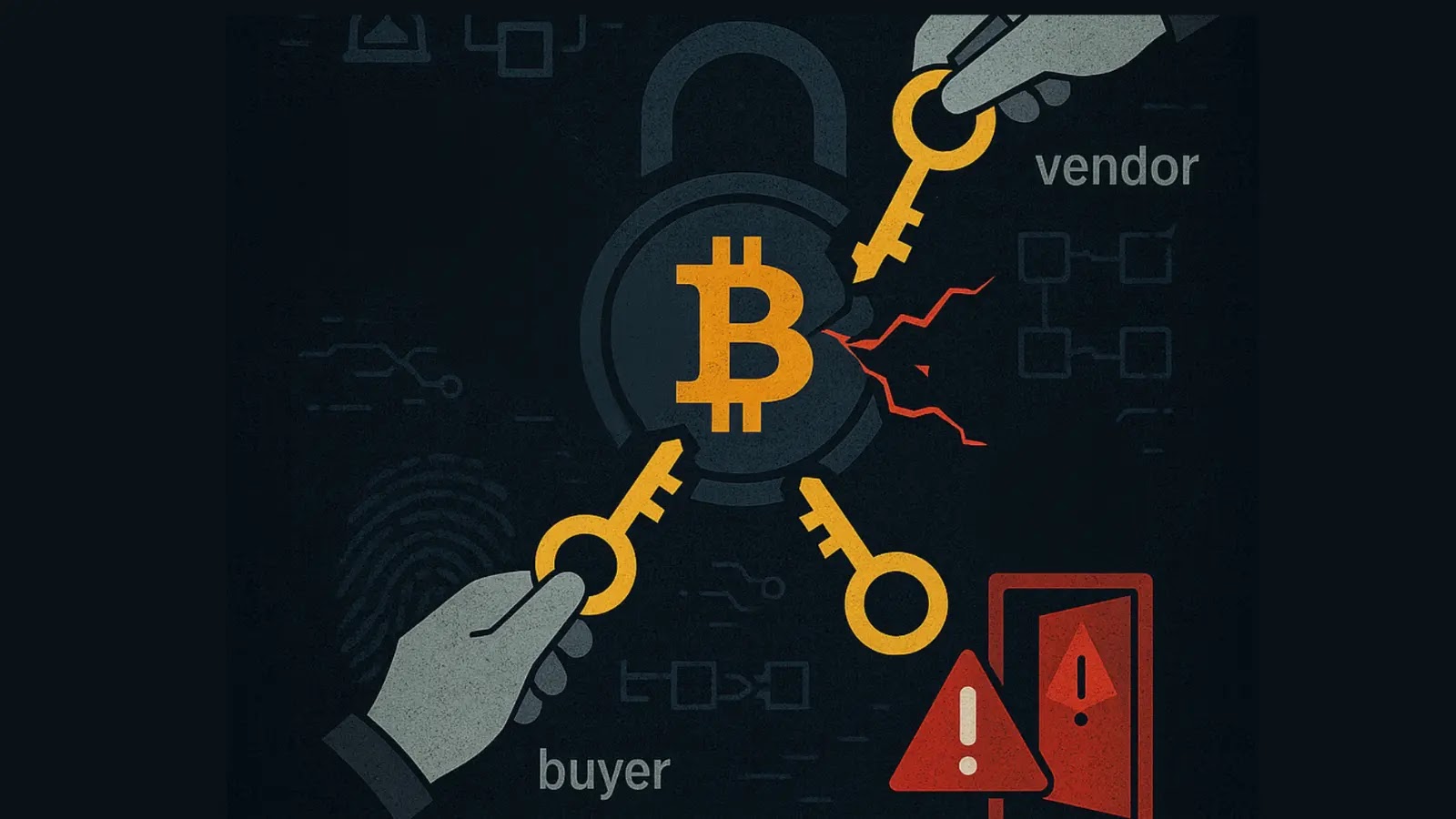Darknet markets operate in the shadows of the internet, facilitating transactions for illicit goods and services. To instill trust among anonymous buyers and sellers, these platforms employ escrow systems designed to secure cryptocurrency transactions. However, recent analyses reveal that these systems, particularly those utilizing multisignature (multisig) wallets and automated release mechanisms, are susceptible to significant vulnerabilities, notably administrator exit scams.
Understanding Multisignature Escrow Systems
In an effort to enhance transaction security, many darknet markets have adopted multisignature escrow systems. Typically, these systems operate on a 2-of-3 signature model involving three parties: the buyer, the vendor, and the market administrator. When a buyer initiates a purchase, the funds are deposited into a multisig address that requires two out of the three signatures to release the funds. In standard transactions, both the buyer and the vendor provide their signatures to finalize the payment. In cases of disputes, the market administrator steps in to provide the necessary second signature, thereby resolving the conflict.
This multisig approach is designed to prevent any single party from unilaterally accessing the funds, offering a layer of security superior to centralized escrow systems where the marketplace holds the funds directly. However, this system is not without its flaws. The reliance on market administrators for dispute resolution introduces a centralized point of control, which can be exploited. Moreover, the effectiveness of this system hinges on the trustworthiness of the administrators, a trust that has been breached in numerous instances.
The Role of Automated Timers in Escrow Systems
To streamline operations and reduce the need for manual intervention, many darknet markets implement automated escrow release systems. These systems are programmed to automatically release funds to vendors after a predetermined period, typically ranging from 7 to 21 days, unless the buyer initiates a dispute within that timeframe. The duration of these timers often varies based on factors such as the nature of the goods and the shipping distance, with shorter periods for domestic transactions and longer ones for international shipments.
While automated timers are intended to facilitate smoother transactions, they also place the onus on buyers to monitor their orders closely and raise disputes promptly if issues arise. Failure to do so results in the automatic release of funds, even if the buyer has not received the purchased goods. This system assumes that buyers will receive their orders within the specified period and will act swiftly if problems occur. However, this assumption does not always hold true, leading to potential losses for buyers.
The Persistent Threat of Administrator Exit Scams
One of the most significant risks associated with darknet market escrow systems is the potential for administrator exit scams. An exit scam occurs when the operators of a marketplace abruptly shut down the site and abscond with the funds held in escrow. This type of scam has led to substantial financial losses for users and has been a recurring issue in the history of darknet markets.
The centralized nature of dispute resolution processes in multisig escrow systems means that administrators have considerable control over the funds. This control can be exploited, especially during periods when the escrow holds significant amounts of cryptocurrency. Historical data indicates that exit scams often coincide with times of high escrow volume, such as during holiday seasons, when transaction activity is at its peak.
The reliance on administrators to fairly resolve disputes and manage escrowed funds introduces a critical vulnerability. If an administrator decides to execute an exit scam, they can disappear with all the funds held in escrow, leaving both buyers and vendors at a loss. The anonymity inherent in darknet markets further complicates the situation, as it makes it exceedingly difficult to trace or recover the stolen funds.
Notable Instances of Exit Scams
Several high-profile exit scams have underscored the vulnerabilities in darknet market escrow systems:
– Evolution Market (2015): Once a leading darknet marketplace, Evolution abruptly shut down in March 2015. The administrators vanished with approximately $12 million worth of Bitcoin held in escrow, leaving users without recourse.
– Empire Market (2020): In August 2020, Empire Market, considered a successor to AlphaBay, went offline without warning. Reports suggest that the administrators absconded with an estimated $30 million in cryptocurrency, marking one of the largest exit scams to date.
– AlphaBay (2017): While initially suspected to be an exit scam, the sudden disappearance of AlphaBay in July 2017 was later revealed to be the result of a law enforcement operation. Authorities seized the marketplace and its assets, including significant amounts of cryptocurrency.
Mitigating the Risks: Strategies for Users
Given the inherent risks associated with darknet market escrow systems, users have adopted various strategies to protect themselves:
– Direct Deals with Trusted Vendors: Some buyers prefer to engage in direct transactions with vendors they have established trust with over time. By bypassing the marketplace’s escrow system, they reduce the risk of losing funds to an exit scam. However, this approach requires a high level of trust and carries its own set of risks.
– Limiting Escrow Use: Users may choose to limit the amount of funds they place in escrow or avoid using escrow systems altogether. While this can reduce exposure to potential exit scams, it also diminishes the protective benefits that escrow systems are designed to provide.
– Vigilant Monitoring: Buyers are encouraged to closely monitor their transactions and initiate disputes promptly if issues arise. Staying informed about the marketplace’s status and being alert to signs of instability can also help users avoid falling victim to exit scams.
Conclusion
While multisignature escrow systems and automated release mechanisms are designed to enhance security and trust in darknet market transactions, they are not foolproof. The centralized control inherent in these systems, combined with the anonymity of darknet markets, creates opportunities for administrator exit scams. Users must remain vigilant, adopt protective strategies, and be aware of the risks associated with these platforms. As the darknet landscape continues to evolve, so too must the measures to safeguard participants from exploitation and financial loss.



